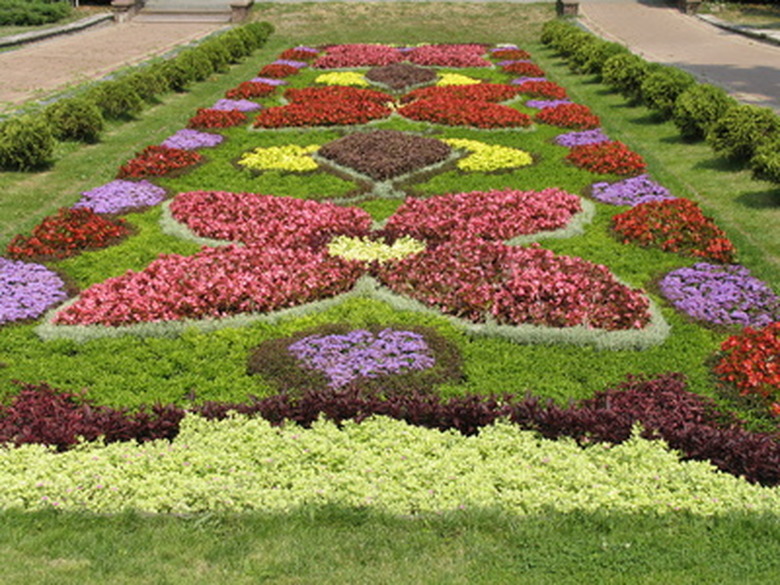Landscape Fabric Types
Landscape fabric is used to prevent weeds from growing in a garden. Landscape fabric is placed on top of garden soil. It inhibits weeds and keeps soil at a uniform temperature, while allowing water and air to reach the soil. Landscape fabric should be replaced about every five years, as it breaks down from light exposure. Use it in gardens that have plants that don't spread, under trees, near walls, or under decks, stones or mulch.
Perforated
Perforated landscape fabric has small, pre-cut holes that allow water and air to reach the soil. Use this type of landscape fabric in gardens, as it is usually lightweight and easier to manage than other types. Perforated landscape fabric is easier to puncture or tear, and should be used in areas that do not have tree roots, heavy foot traffic or lots of animal activity.
- Landscape fabric is used to prevent weeds from growing in a garden.
- Perforated landscape fabric is easier to puncture or tear, and should be used in areas that do not have tree roots, heavy foot traffic or lots of animal activity.
Spun
Spun-bonded landscape fabric is made of polyester and has a swirling pattern that is tough to puncture or tear. Use near trees or on pathways. Tree roots will struggle to break through this fabric, unlike woven or perforated types, but air and water can reach the soil. Holes must be cut for existing plants. A University of Florida study found that spun-bonded landscape fabric is effective in controlling weevil infestations.
Woven
Woven landscape fabric allows water and air to uniformly reach the soil beneath. Woven landscape fabric is made of polypropylene and has a criss-cross pattern. It may be used in gardens with spreading plants, as even new plants can work their way through the fabric. Do not use this fabric where tree roots may break through. When putting woven fabric down, cut holes for existing plants. Woven fabric is puncture and tear resistant.
- Spun-bonded landscape fabric is made of polyester and has a swirling pattern that is tough to puncture or tear.
- Tree roots will struggle to break through this fabric, unlike woven or perforated types, but air and water can reach the soil.
Fertilize Through Landscape Fabric
Choose good-quality, woven landscape fabric such as thermally-spun, bonded fabric, that allows both water and air to pass through it. If you install it upside-down, the liquid tends to pool up on the surface of the fabric instead of soaking in. Spray the liquid fertilizer over the entire area, being careful to follow the manufacturer's instructions. Cut a ring of holes or x-shaped slits in the landscape fabric around the plant, about 18 inches from the trunk of young plants and about 3 feet out from the center of larger trees and shrubs. Continue this pattern until the last ring is just past the drip line. Typically the spike should not stick up above the ground when you're done.
References
- University of Florida: Landscape Fabric As A Physical Barrier To Neonate Diaprepes Abbreviatus (Coleoptera Curculionidae)
- North Coast Gardening: Professional Tips for Using Landscape Fabric Right
- Virginia Cooperative Extension: Mulching for a Healthy Landscape
- University of Minnesota Extension: Fertilizing Evergreens
- Danny Lipford: How to Install Landscape Fabric and Plastic
